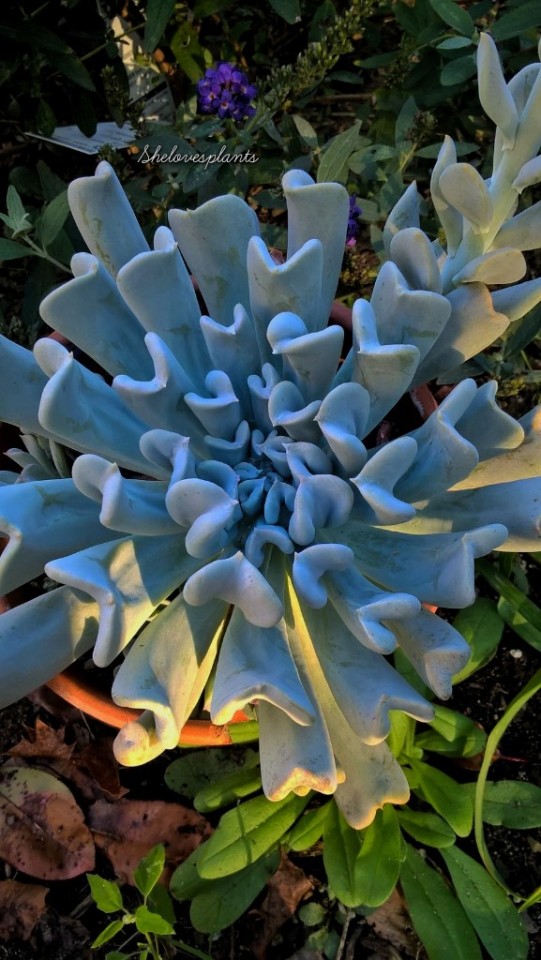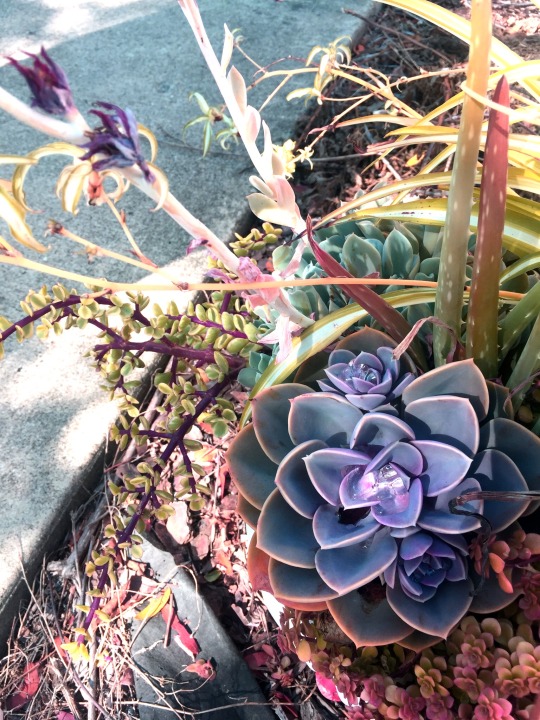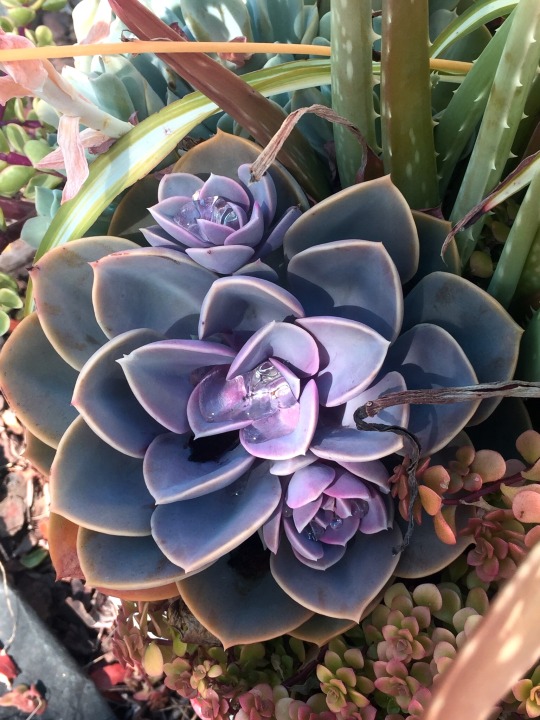Photo
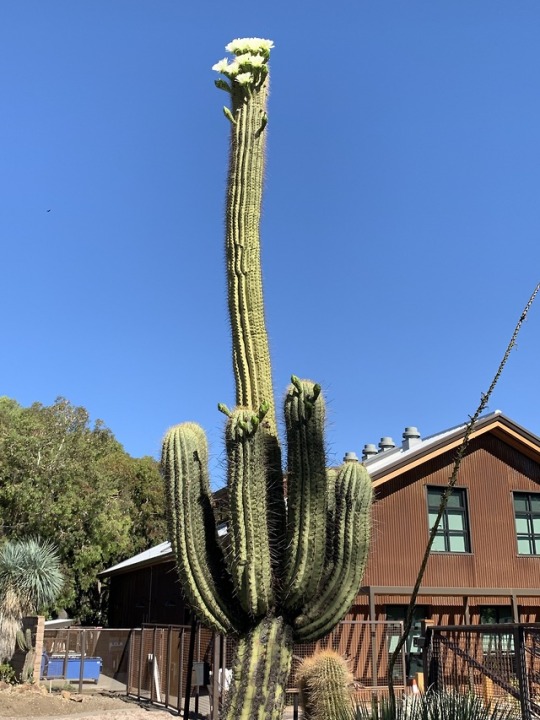
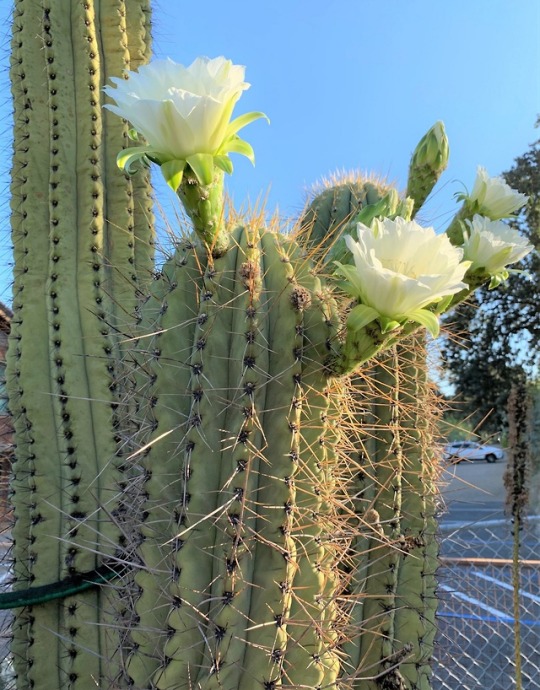
Trichocereus terscheckii
People often mistake this tall columnar cactus for a saguaro, but it is actually Trichocereus terscheckii, a similar-looking species from northwestern Argentina. A synonym is Echinopsis terscheckii. It is more cold-tolerant than the saguaro, and makes an excellent landscaping plant in our part of California. This year, it has put out far more flowers than ever before, so that makes us happy.
-Brian
138 notes
·
View notes
Photo
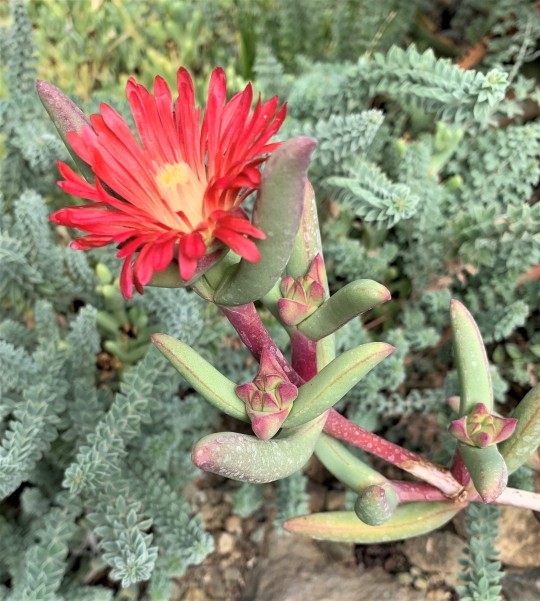

Astridia herrei
Astridia is a small genus in the Ice Plant Family (Aizoaceae), native to the lower Orange River along the border between South Africa and Namibia. These plants are not often seen in cultivation, so it is a treat when they come into flower. They do not like too much summer moisture, so they do well in a dry-summer Mediterranean climate.
-Brian
107 notes
·
View notes
Photo


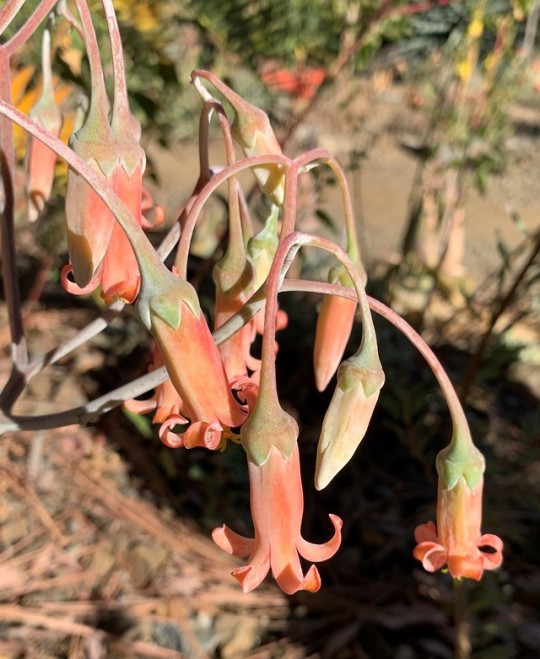
Cotyledon orbiculata var. oblonga
This plant is part of the incredibly variable Cotyledon orbiculata complex, and it was long known as Cotyledon undulata, on account of the undulations of its leaf edges (this trait is not as pronounced on the plant pictured as it is in some other examples, but it is certainly visible). It is now included in Cotyledon orbiculata var. oblonga, and its pendent coral-orange flowers look much like those of other forms of the species. It belongs to the Stonecrop Family (Crassulaceae), and is native to South Africa.
-Brian
76 notes
·
View notes
Photo
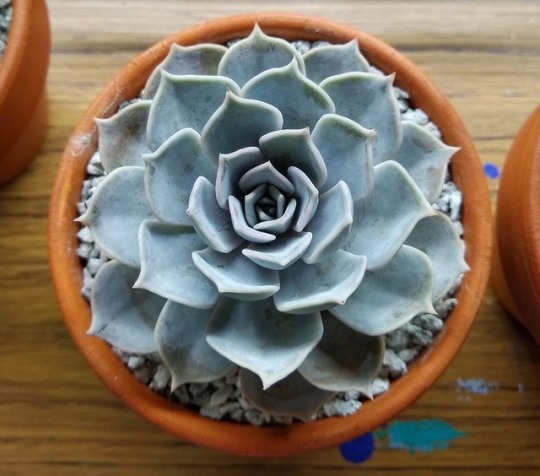
Another peek at this pretty girl, who we now know is an echeveria lilacina!
150 notes
·
View notes
Photo

Ferocactus pilosus
This barrel cactus, native to northeastern Mexico, is primarily spring-blooming. However, we are happy to have it give a repeat performance in September. This cluster of 5 flowers shows the progression from young bud (yellow at the bottom) to open flowers (orange at the top). The cupped flowers of this species do not open as widely as other Ferocactus species.
-Brian
38 notes
·
View notes
Photo


Echinopsis ‘Kazuko’
Hybridizer Bob Schick worked for many years creating Echinopsis hybrids at the Huntington Botanical Gardens, and these come in a wide range of colors. This one is named ‘Kazuko’, and it features pastel hues in the orange/peach/pink range.
-Brian
939 notes
·
View notes
Photo
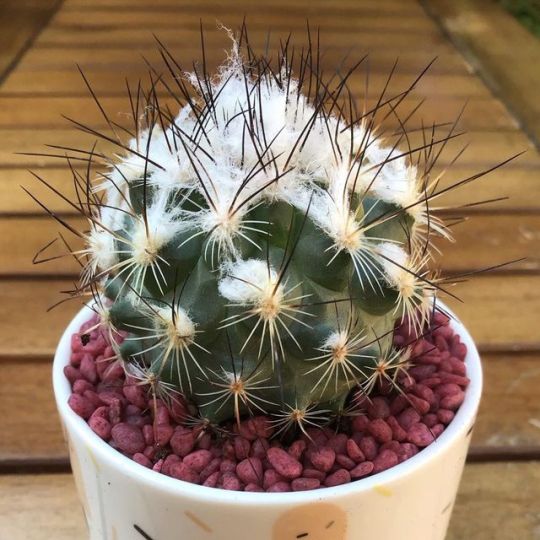
Turbinicarpus viereckii ssp. gielsdorfianus
#cactus #suculentas #cactaceas #succulents #succu #sucuholic #cactuslover #lovecactus #succulentobssesion #succulenta #succulentsofinstagram #uncactusenmadrid
#turbinicarpus
#turbinicarpusviereckii
#turbibicarpusgielsdorfianus
https://www.instagram.com/p/B3b7a2YIoaL/?igshid=1gh5q4v5ed6hh
34 notes
·
View notes
Photo
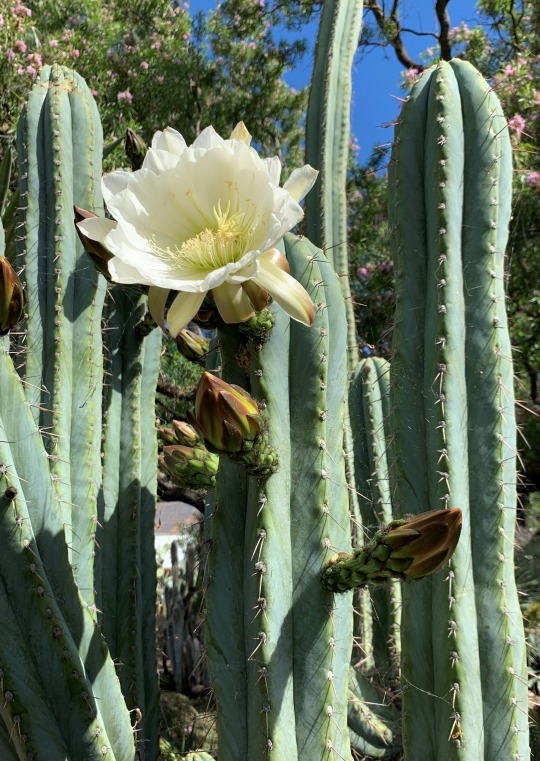

Trichocereus peruvianus
This columnar cactus from Peru is sometimes confused with Cereus peruvianus, but these two tall plants are readily distinguished by their flowers: plants in Trichocereus have hairs on the outsides of their flowers, while the flowers in Cereus are completely smooth. Trichocereus peruvianus is a close relative of Trichocereus pachanoi, the San Pedro Cactus, but it has longer spines and a more bluish coloration.
-Brian
169 notes
·
View notes
Photo
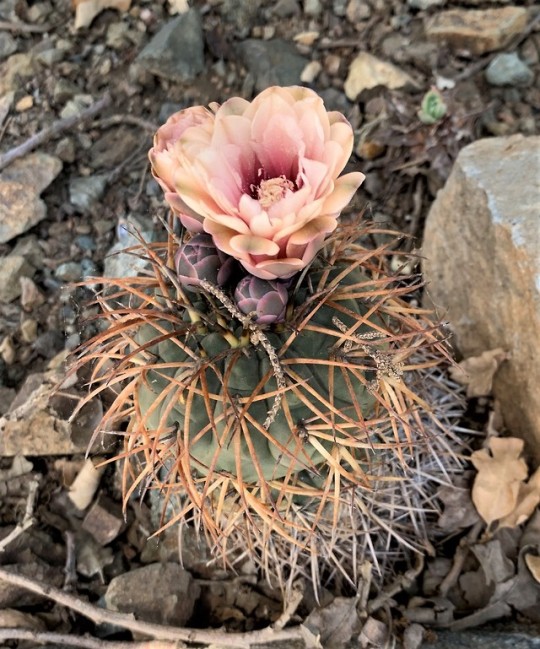
Gymnocalycium spegazzinii
Gymnocalycium is a genus of chubby cacti from Argentina, southern Bolivia, Paraguay and Uruguay. Their spination varies tremendously, but some species such as Gymnocalycium spegazzinii have ferocious spines. This is the first time this plant has flowered at the Ruth Bancroft Garden, and in the photo there are 2 more buds visible alongside the open flower, so we can expect a reprise. From Salta Province in northwestern Argentina.
-Brian
54 notes
·
View notes
Photo
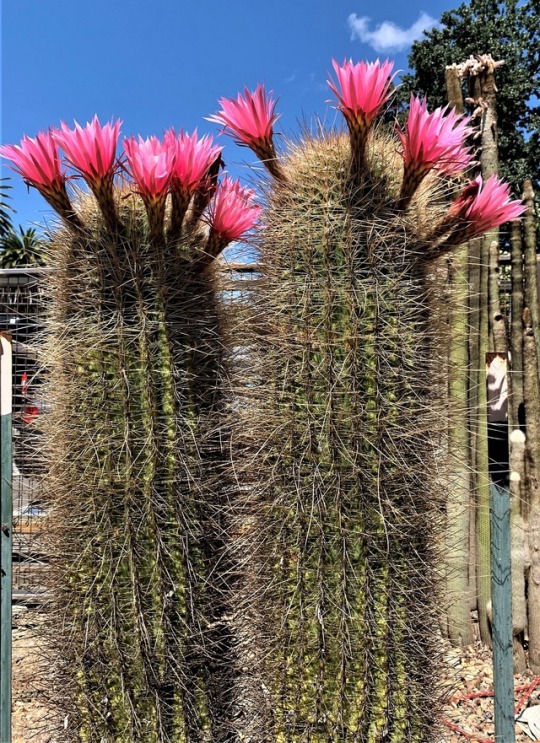

Trichocereus tarijensis
For a time, all plants in Trichocereus were included in Echinopsis, so this plant was called Echinopsis tarijensis, but most experts now agree that the 2 groups are best kept separate. Trichocereus tarijensis comes from high altitudes in southern Boliva and northwestern Argentina. The tallest specimens in nature are up to 5 meters in height, so our plant at 1.6 meters cannot be called full-sized, but it is certainly putting on a fine flower display with its large pink flowers (not as red as our other plants of the species).
-Brian
82 notes
·
View notes
Photo

Trichocereus tarijensis (Echinopsis tarijensis)
This shaggy columnar cactus comes from southern Bolivia and northwestern Argentina. where it grows at high altitudes. The purplish-red flowers are large and spectacular. There has been some question as to whether this plant and its relatives should be seen as gigantic species of Lobivia, or as species of Trichocereus which have colored flowers instead of white nocturnal flowers. For a time, all plants in Lobiva and Trichocereus were included in Echinopsis, so this point was moot, but now that these 2 groups have been restored as separate genera, we must decide where to place tarijensis. The consensus for the moment is to put it in Trichocereus.
-Brian
32 notes
·
View notes
Photo



Aeonium castello-paivae
This small clumping Aeonium looks more like an Echeveria than other species do, and might easily be mistaken for one if not for its flowers. The flowers have an unusual coloration, a very pale yellow with a slight tinge of pink, but they are not really showy. Native to the island of La Gomera in the Canary Islands.
-Brian
59 notes
·
View notes
Photo
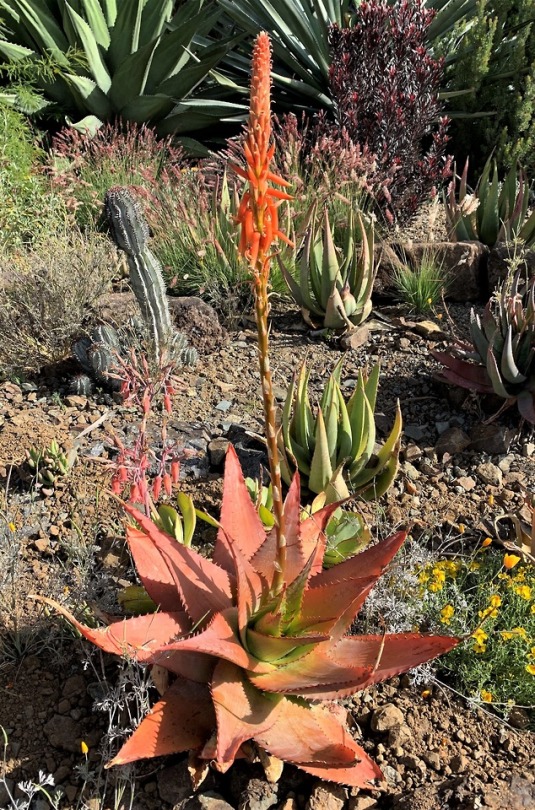


Aloe glauca var. muricata
Aloe glauca is a very attractive species from the western part of South Africa, found primarily in winter-rainfall regions. It has several forms, varying in size as well as whether or not they form stems. Reynolds, in his book Aloes of South Africa, applied the name Aloe glauca var. muricata to plants from the Piketberg area, to the north of Cape Town. Plants from this area are distinctive in having curled-back tips on the flower bracts - see close-up of the tip of the inflorescence in the third photo, and the leaves tend to become coral-colored in sunny situations. In recent books, the variety muricata has been discarded in favor of Aloe glauca var spinosior, but I am not certain about this, because I don’t know what exactly this name refers to (plants from farther north, sometimes called the Namaqualand form of Aloe glauca, have spinier leaves, and seem more appropriate to this name).
-Brian
60 notes
·
View notes
